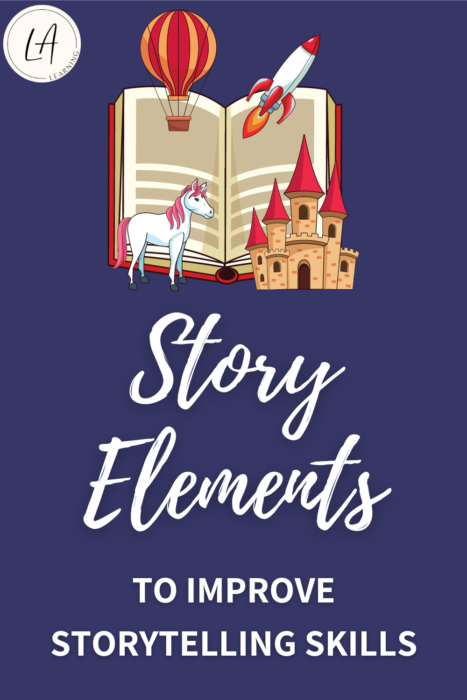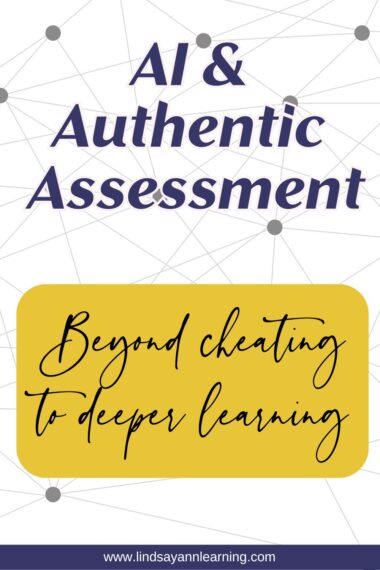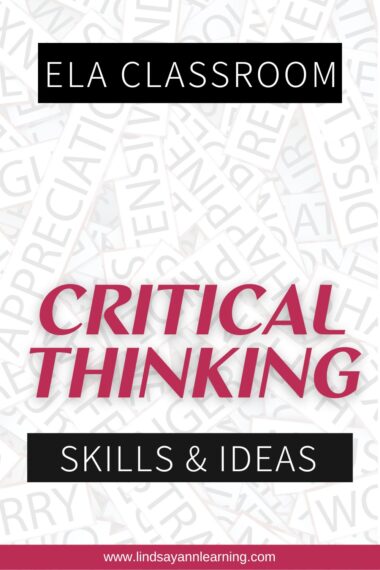Let me tell you a story about story elements…
Once upon a time, there was a teacher who was tired of reading stories that take place once upon a time. This teacher, who loves students being creative, dreads reading through 75 student-written stories that have all the elements in literature – like conflict, plot, and characterization – but lack the spark that would make them special. One day, then, this teacher decided to do something about this monotony.
If you find the tale above to be a familiar one, you aren’t alone in a galaxy far, far away.

Read on for some ideas of how we can have students approach story elements in the classroom to become better storytellers.
Defining and Exemplifying vs. Constructing Story Elements
Oftentimes when teaching narrative writing, we jump right into story elements lesson plans that include story elements definitions or a handful of literary analysis examples.
A class might begin with the study of “theme,” for example, where we discuss what it is and isn’t, how it’s different from and similar to morals, etc.
Oftentimes, then, we (the teachers) are the ones thinking about story elements examples, using what we’ve read or seen.
Perhaps, though, the better way is to ask students to deconstruct (or construct) meaning from what they’ve read or seen before.

Using Activities to Improve Students’ Storytelling
Take a story like Cinderella, for instance. Most students are familiar with at least one version of its story, its conflicts, and its characters. You could have students deconstruct and play around with the story elements of Cinderella to help understand how to create satisfying, creative narratives of their own.
Rewrite, Change, and Mash-Up
Idea #1: Have students try to rewrite (or at least talk through a new plot) the story if a story element was removed.
With Cinderella, for example, how would the story play out if there was no ticking clock? No Fairy Godmother? No conflict with stepsisters and stepmother? As students work to reimagine the story without a story element, they will begin to see how the story elements work together to create a satisfying and memorable narrative.

Idea #2: Ask students to change a story element to evoke a new mood or tone in the text.
With Cinderella, for example, students can see this in action by comparing the Grimm’s version to Disney’s version to see how changing some elements changes the story.
(A great way to illustrate this for students is to show them a trailer “recut” into something different, like Mary Poppins being recut into “Scary Mary,” a trailer that turns the beloved family film Mary Poppins into a horror movie, shifting its mood drastically.)
By students changing an element of a story–like a story’s mood from being inspirational and hopeful to dreadful and disturbing–they gain a greater sense of how story elements in literature work.
Idea #3: Let students make a mash-up, taking parts from different stories to try to make a cohesive narrative.

Mash-ups are all the rage these days as students see their favorite Marvel superheroes come together on-screen in The Avengers, so let them try something similar with established characters and settings.
What happens, for instance, when story elements of Cinderella are mashed-up with other Disney movies? Just imagine Cinderella’s Fairy Godmother crossing paths with the Genie from Aladdin! (If nothing else, it’d be magical!)
By mashing together different elements, students can see and understand what motivates characters, how setting impacts plot, why conflicts occur, etc.

Anchoring the Story Elements
Some teachers, though, like to start with the known, like from a story elements anchor chart, and build from there, and that’s okay!
Beginning with a common set of definitions/concepts that students will learn and master gives students an anchor as they explore different stories and texts.
With this in mind, here are a couple of activities you can use that build from a story elements anchor chart and its prescribed and set definitions and concepts:
Idea #1: Create a Mad Libs-style story elements graphic organizer wherein students can add different, disparate ideas that you can then challenge students to use to create a narrative.

For instance, the students could have a story elements chart with blank lines underneath things like “character” and “setting.” Mad Libs-style, you could then ask them to name an animal, a famous person, and a profession, for instance. Students then write these under the “character” part of the chart–and that becomes the basis for a story they are to tell, somehow bringing together those characters into some kind of conflict with each other.
The same idea can be applied to other story elements like “setting’ – name a period in American History, pick a weather condition, choose a famous landmark, which gives the students an opportunity to think as writers as they consider how to incorporate these elements into their stories.
Idea #2: Use a elements anchor chart as students read stories.
As students read, have them reference and make connections to the anchor chart you’ve chosen to use in class.
For example, if “mood” is on the anchor chart, as students read their independent reading books today, have them note the paragraph where the mood is strongest, most provocative and intriguing. Those passages then become their anchor for story element examples they can draw from in their own composition.
For instance, if the student wants to write a horror story, the students can reference the anchor-passages from the last horror story he/she/they read and consider what techniques the published author used. The student can then use this to guide his/her/their writing.
Idea #3: Let AI write a story for students that they can criticize (and improve on) using their anchor chart.
Try this: for each element of the story elements chart, have students define a ranking system (like 1 to 4 stars) and work to come to consensus on what each level means, perhaps using the texts they’ve encountered already to help calibrate.
For instance, for “setting,” a group might decide that a “4” is a well-developed and unique setting like in the story “The Pedestrian” by Bradbury and a “1” is a recognizable, sort of cliché setting, like in Cinderella.
Students can then read and rank the AI-generated story, looking for ways they–as human storytellers–can improve.

Stories Will Always Be Relevant
Regardless of what method(s) we use to help students grow to be better storytellers, it’s important for students to know the story elements that make an engaging, powerful story.
In the classroom, we talk about relevance and why we want students to learn something. We ask ourselves and our students why something is important beyond the classroom. Well, for storytelling, the answers are easy ones–we tell stories all the time, whether it’s in our blog posts, our TikToks, our job interviews, or our afternoon hangouts with friends.
Indeed, the story elements in literature help us understand the story elements in our lives, so learning how to develop narratives helps make our personal stories both worth telling and worth listening to.
When we help students learn how to understand, manipulate, and create story elements, it’s not once upon a time we will encounter powerful stories; it will be, instead, all of the time, and that would certainly be the happiest of endings for us all.















 Effective Classroom Management Strategies: Setting the Tone for Learning
Effective Classroom Management Strategies: Setting the Tone for Learning